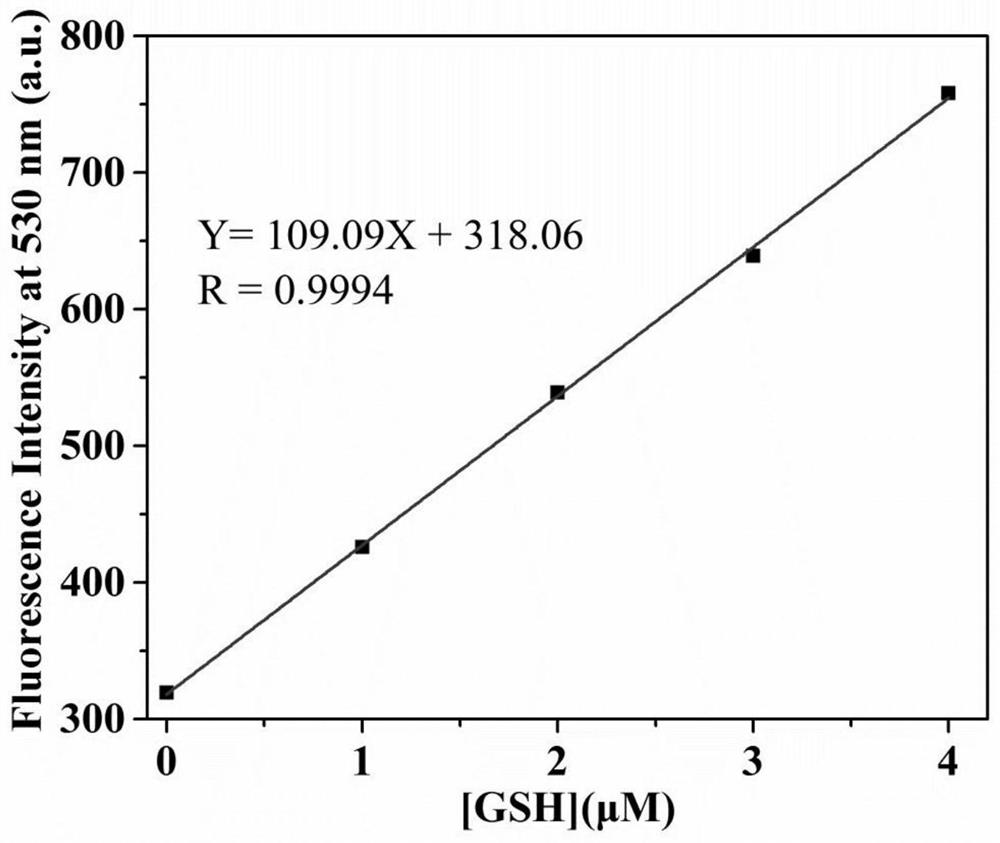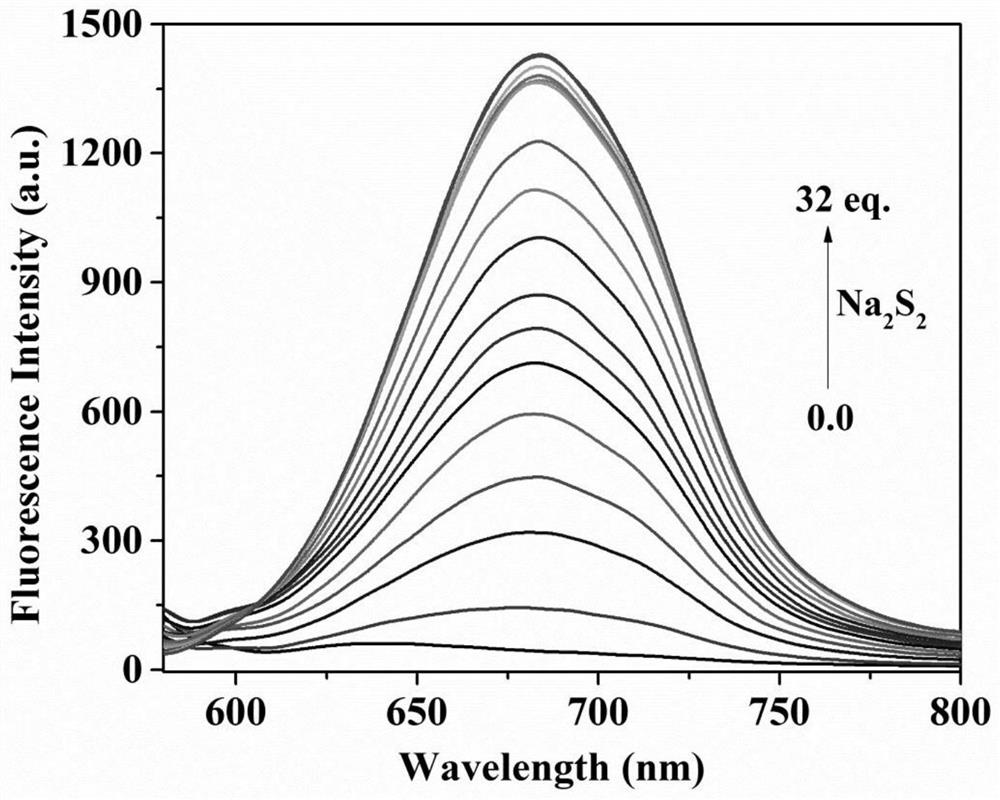Fluorescent probe for differentially detecting GSH and H2Sn (n >1) through two channels
A fluorescent probe, dual-channel technology, applied in the field of chemical analysis and detection
- Summary
- Abstract
- Description
- Claims
- Application Information
AI Technical Summary
Problems solved by technology
Method used
Image
Examples
Embodiment 1
[0038] Embodiment 1: the synthesis of compound 2
[0039] Resorcinol (7.707 g, 70.0 mmol) and compound 1 (0.979 g, 3.5 mmol) were dissolved in 10.0 mL of acetonitrile, and the mixture was stirred at 0° C. for 5 minutes. Sodium chlorite (1.112 g, 12.3 mmol) and sodium dihydrogen phosphate (1.896 g, 15.8 mmol; dissolved in 1.5 mL of water) were added to the above mixture. After stirring the reaction at 0 °C for 30 minutes, it was poured into 50 mL of ice water. The mixture was acidified with 1mol / L hydrochloric acid solution to form a large amount of yellow precipitate. After suction filtration and washing, it was dried under vacuum to obtain 0.751 g of tan solid as compound 2, yield: 76.2%.
Embodiment 2
[0040] Embodiment 2: the synthesis of compound 3
[0041] Diphenyldiselenide (0.218 g, 0.7 mmol) and sodium borohydride (0.034 g, 0.9 mmol) were dissolved in 2.5 mL of absolute ethanol. Under the protection of nitrogen, the mixture was stirred and reacted at room temperature for 10 minutes to obtain compound 3 as a colorless transparent solution. The product of this step can be directly used in the next step of synthesis without further purification.
Embodiment 3
[0042] Embodiment 3: the synthesis of compound 4
[0043] Compound 2 (0.180 g, 0.6 mmol) was dissolved in anhydrous N,N-dimethylformamide (5.0 mL), and triethylamine (240.0 μL, 1.8 mmol) was added as an acid-binding agent. Then compound 3 (0.110 g, 0.7 mmol) was added, and the reaction was stirred at room temperature for 20 minutes. The mixture was then poured into 50 mL of water and extracted with dichloromethane, keeping the organic phase. The organic solvent was removed under reduced pressure to obtain 0.243 g of orange solid as compound 4 with a yield of 98.0%.
PUM
 Login to View More
Login to View More Abstract
Description
Claims
Application Information
 Login to View More
Login to View More - R&D
- Intellectual Property
- Life Sciences
- Materials
- Tech Scout
- Unparalleled Data Quality
- Higher Quality Content
- 60% Fewer Hallucinations
Browse by: Latest US Patents, China's latest patents, Technical Efficacy Thesaurus, Application Domain, Technology Topic, Popular Technical Reports.
© 2025 PatSnap. All rights reserved.Legal|Privacy policy|Modern Slavery Act Transparency Statement|Sitemap|About US| Contact US: help@patsnap.com



